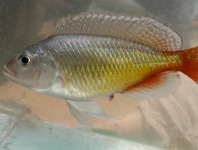Abstract
We describe two species of Pycnomerus, P. rimatara and P. prebblei, using subfossil material, from the island of Rimatara in the Austral Archipelago of French Polynesia. We consider it likely that these species are globally extinct, a result of the combination of a range of factors including: their probable single island endemic status, the lack of intact indigenous forest on Rimatara, their occurrence in the subfossil record only in samples older than 200–300 years before the present, and lack of historical collections. The potential extinction of these species reflects the long history of human transformation of Polynesian lowland forest habitats, especially the use of fire to transform landscapes, and parallels extensive and well-known extinctions in birds and land snails.
References
Craig, D.A. & Porch, N. (2013) Subfossils of extinct and extant species of Simuliidae (Diptera) from Austral and Cook Islands (Polynesia): anthropogenic extirpation of an aquatic insect? Zootaxa, 3641 (4), 448–462.
http://dx.doi.org/10.11646/zootaxa.3641.4.10
Ivie, M.A. & Ślipiński, S.A.(1989) The Pycnomerini (Coleoptera: Colydiidae) of the West Indies. Florida Entomologist, 72 (1), 64–80.
http://dx.doi.org/10.2307/3494968Ivie, M.A. & Ślipiński, S.A. (2001) Pycnomerus thrinax, a new North American zopherid (Coleoptera). Insecta Mundi,14, 225–227.
Kahn, J.G., Nickelsen, C., Stevenson, J., Porch, N., Dotte-Sarout, E., Christensen, C.C., May, L., Athens, J.S. & Kirch, P.V. (2015) Mid- to late Holocene landscape change and anthropogenic transformations on Mo’orea, Society Islands: A multi-proxy approach. The Holocene, 25 (2), 333–347.
http://dx.doi.org/10.1177/0959683614558649Liebherr, J.K. & Porch, N. (2015) Reassembling a lost lowland carabid beetle assemblage (Coleoptera) from Kauai, Hawaiian Islands. Invertebrate Systematics, 29 (2), 191–213.
http://dx.doi.org/10.1071/is14047Lord, N.P. & Leschen, R.A.B. (2014) Illustrated catalogue and type designations of the New Zealand Zopheridae (Coleoptera: Tenebrionoidea). Zootaxa, 3809 (1), 1–127.
http://dx.doi.org/10.11646/zootaxa.3809.1.1Pope, R.D. (1955) Los insectos de las Islas Juan Fernandez. 25. Colydiidae. Revista Chilena de Entomologia, 4, 153–158.
Porch, N. & Elias, S.A. (2000) Quaternary beetles: a review and issues for Australian studies. Australian Journal of Entomology, 39 (1), 1–9.
http://dx.doi.org/10.1046/j.1440-6055.2000.00143.xPrebble, M. & Wilmshurst, J.M. (2009) Detecting the initial impact of humans and introduced species on island environments in Remote Oceania using palaeoecology. Biological Invasions, 11, 1529–1556.
http://dx.doi.org/10.1007/s10530-008-9405-0Pulak, C. (1998) The Uluburun shipwreck: an overview. The International Journal of Nautical Archaeology, 27 (3), 188–224.
Régier, C., Fontaine, B. & Boucher, P. (2009) Not knowing, not recording, not listing: Numerous unnoticed mollusc extinctions. Conservation Biology, 23 (5), 1214–1221.
https://doi.org/10.3410/f.1166192.627118
Seibold, S., Brandl, R., Buse, J., Hothorn, T., Schmidl, J., Thorn, S. & Müller, J. (2015) Association of extinction risk of saproxylic beetles with ecological degradation of forests in Europe. Conservation Biology, 29 (2), 382–390.
https://doi.org/10.1111/cobi.12427
Sharp, D. (1899) On some insular Coleoptera collected by Mr. J.J. Walker, R.N., F.L.S. The Entomologist’s Monthly Magazine, Second Series, 10, 7–10.
Ślipiński, S.A. (1984) Studies on the African Colydiidae (Coleoptera). Part II. Genera: Afrorthocerus Pope and Pycnomerus Erichson. Annales Zoologici, 38, 129–158.
Steadman, D.W. (2006) Extinction and Biogeography of Tropical Pacific Birds. The University of Chicago Press, Chicago, 480 pp.
Whitehouse, N.J. (2006) The Holocene British and Irish ancient forest fossil beetle fauna: implications for forest history, biodiversity and faunal colonisation. Quaternary Science Reviews, 25, 1755–1789.
http://dx.doi.org/10.1016/j.quascirev.2006.01.010Wilmshurst, J.M., Hunt, T.L., Lipo, C.P. & Anderson, A.J. (2011) High-precision radiocarbon dating shows recent and rapid initial human colonization of East Polynesia. Proceedings of the National Academy of Sciences USA, 108 (5), 1815–1820.
http://dx.doi.org/10.1073/pnas.1015876108

